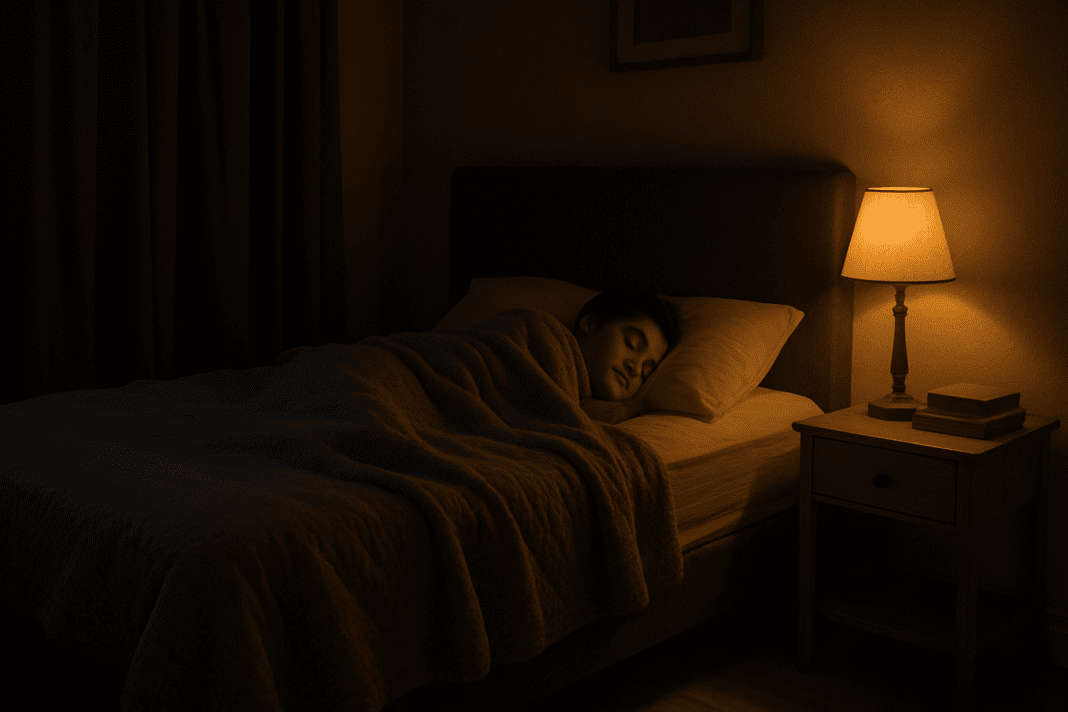For millions of adults struggling to get a good night’s sleep, tossing and turning is more than just an occasional nuisance; it is a persistent pattern that leaves the body and mind unrested, drained, and vulnerable to a host of physical and psychological issues. This type of restlessness, where sleep is fragmented and elusive, is not just an inconvenience—it often reflects deeper disruptions in sleep architecture or signals a complex interplay between lifestyle, environment, and physiology. In this comprehensive guide, we will explore seven science-backed strategies to address tossing and turning, drawing on cutting-edge research and clinical insights to illuminate how these solutions can restore quality sleep and improve overall well-being.
You may also like: 12 Critical Signs to Watch For: How to Know If You Have Sleep Insomnia and What to Do Next
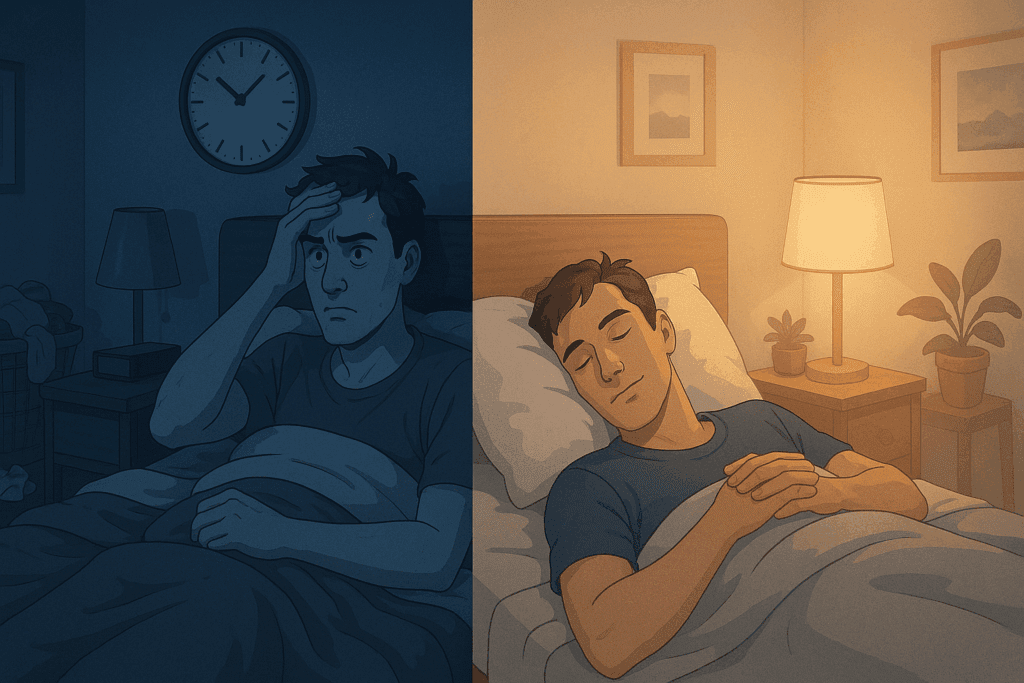
Understanding the Science Behind Tossing and Turning at Night
Before delving into specific solutions, it’s essential to understand what causes tossing and turning in the first place. This form of restless sleep is frequently rooted in disruptions to the circadian rhythm, heightened arousal of the nervous system, or even undiagnosed sleep disorders such as restless legs syndrome or sleep apnea. External stressors, such as work pressure or personal conflicts, can lead to hyperarousal, a state in which the body feels uncomfortable when trying to sleep. This tension, in turn, prevents the brain from descending into the deep, restorative phases of sleep.
Furthermore, the environment in which one sleeps plays a critical role. Suboptimal bedroom conditions, such as excessive light, noise, or uncomfortable bedding, can lead to restlessness at night and compromise sleep efficiency. Additionally, irregular bedtime routines, the use of stimulants like caffeine late in the day, and exposure to blue light from screens can all contribute to the internal dissonance that leads to tossing and turning. Identifying and modifying these contributing factors is a foundational step in reclaiming restful sleep.
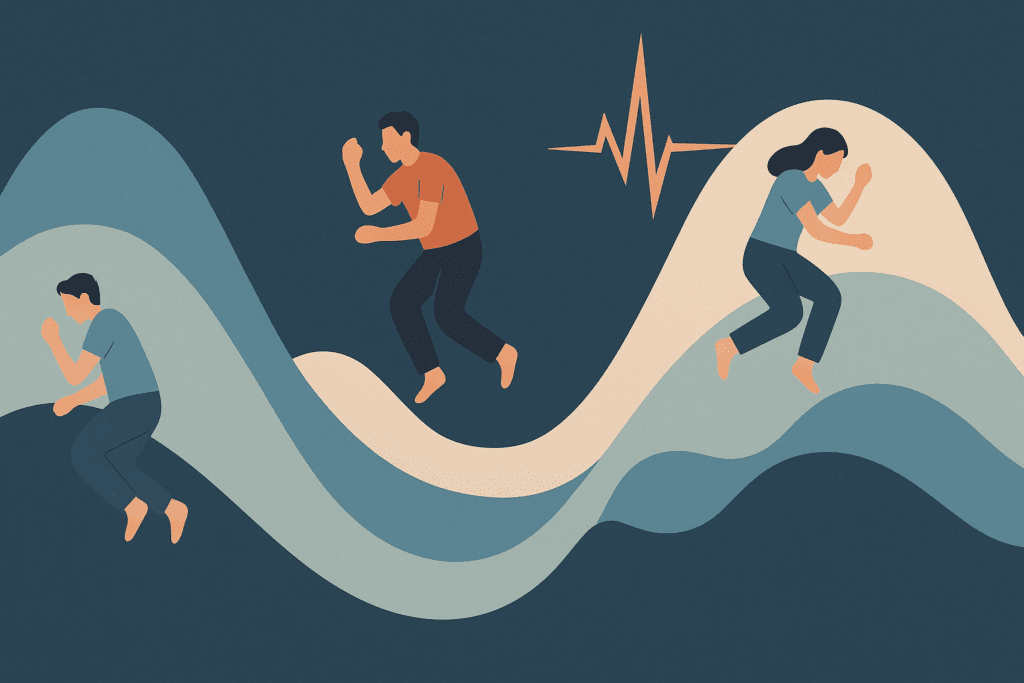
Identifying the Meaning of Restless Sleep Through Sleep Architecture
The meaning of restless sleep becomes clearer when examined through the lens of sleep architecture, which refers to the structure and pattern of sleep stages throughout the night. Sleep is not a uniform state but a progression through multiple cycles of non-REM and REM stages, each serving distinct restorative purposes. When these cycles are interrupted—either by waking or by shifting too frequently between lighter stages of sleep—individuals often report waking up feeling unrefreshed despite spending sufficient time in bed.
Tossing and turning disrupt the natural ebb and flow of these stages, particularly slow-wave sleep (SWS) and REM sleep, which are essential for memory consolidation, emotional regulation, and physical recovery. Repeated disruptions may also reduce overall sleep efficiency, meaning that the percentage of time spent asleep while in bed declines. For those wondering, “Why do I toss and turn all night?” the answer often lies in compromised sleep cycles. Tools such as polysomnography or at-home sleep tracking can reveal patterns that indicate whether these disruptions are frequent enough to warrant further medical evaluation or behavioral intervention.

Establishing a Sleep-Supportive Environment to Reduce Tossing and Turning
Creating an environment that promotes deep, uninterrupted sleep is one of the most powerful ways to address tossing and turning at night. Environmental modifications, while seemingly minor, can yield profound changes in sleep quality. Start by optimizing your bedroom for darkness and silence. Blackout curtains, eye masks, and white noise machines can help minimize sensory disruptions that fuel nighttime awakenings and restlessness at night.
Temperature control is another vital aspect. Sleep research consistently shows that a cool room, ideally between 60 to 67 degrees Fahrenheit, supports the body’s natural drop in core temperature necessary for the initiation and maintenance of sleep. Additionally, investing in a high-quality mattress and supportive pillows tailored to your preferred sleep position can make a significant difference. For many, the body feels uncomfortable when trying to sleep simply due to poor spinal alignment or inadequate cushioning.
Lighting also plays a critical role. Exposure to natural light during the day reinforces a healthy circadian rhythm, while limiting blue light exposure in the evening signals the brain that it’s time to wind down. Swapping out harsh overhead lighting for warmer tones and using dimmable bulbs or smart lighting systems can ease the transition from wakefulness to sleep, thereby reducing the likelihood of tossing and turning throughout the night.
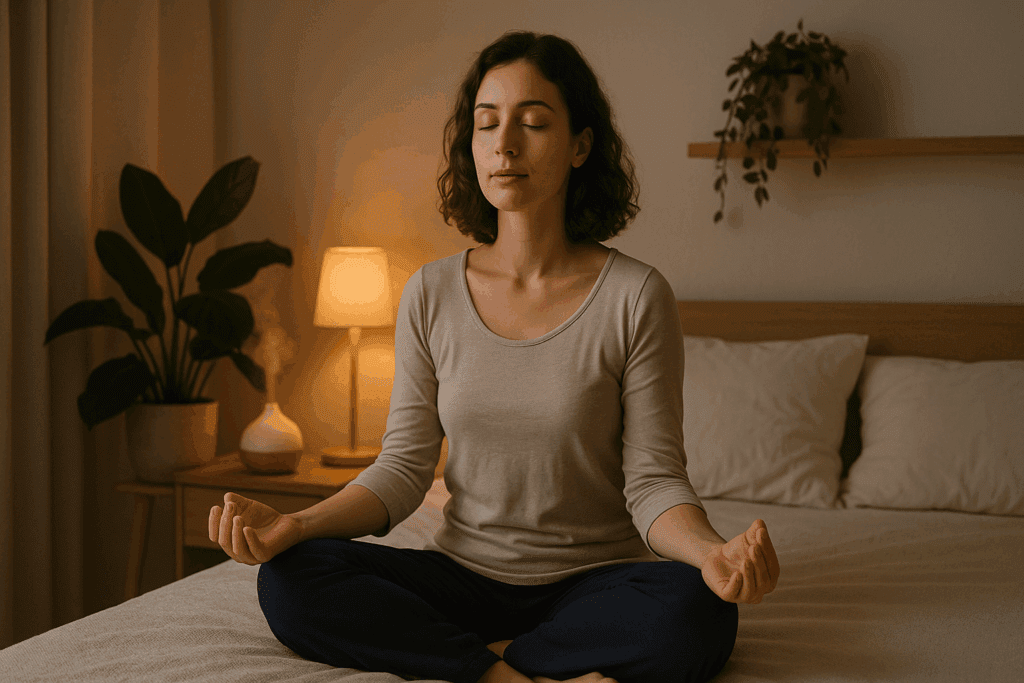
Behavioral Strategies for Addressing Restlessness at Night
Behavioral changes, particularly those rooted in cognitive-behavioral therapy for insomnia (CBT-I), are among the most effective long-term solutions for restlessness at night. CBT-I targets maladaptive sleep-related thoughts and behaviors, helping individuals replace them with healthier habits that support consistent and restorative rest. This approach is often recommended over pharmaceutical interventions due to its lasting benefits and minimal side effects.
One key technique is stimulus control therapy, which involves strengthening the association between the bed and sleep. This means going to bed only when sleepy, using the bed only for sleep and intimacy, and getting out of bed if unable to fall asleep within 20 minutes. This strategy helps to retrain the brain to associate the bedroom environment with relaxation rather than frustration or anxiety.
Another effective component is sleep restriction therapy, which initially limits the amount of time spent in bed to closely match the amount of actual sleep. Although counterintuitive, this method consolidates fragmented sleep and reduces periods of wakefulness. Over time, as sleep becomes more efficient, the allowed time in bed is gradually increased. Through these behavioral shifts, individuals often experience reduced tossing and turning, improved sleep continuity, and a more refreshed feeling upon waking.
The Physiological Impact of Feeling Restless at Night
Feeling restless at night is not merely a psychological issue; it also carries significant physiological consequences. Chronic sleep fragmentation has been linked to heightened cortisol levels, increased inflammation, and impaired glucose metabolism. These changes elevate the risk for cardiovascular disease, obesity, and type 2 diabetes. From a neurological perspective, restless sleep can impair executive function, reduce attention span, and exacerbate mood disorders such as depression and anxiety.
The interplay between body and brain during sleep is delicate. For instance, inadequate REM sleep impairs the brain’s ability to process emotions, making individuals more susceptible to stress. Moreover, slow-wave sleep plays a critical role in the detoxification of neurotoxins through the glymphatic system. Disruptions to this stage can impair cognitive performance and increase the risk of neurodegenerative diseases such as Alzheimer’s. Thus, managing the causes behind tossing and turning is not only about enhancing nightly rest but also about protecting long-term health and cognitive function.
Physical discomfort is a commonly overlooked factor that contributes to restlessness. Whether due to muscle stiffness, chronic pain, or underlying conditions like arthritis, discomfort prevents the body from achieving the stillness required for deep sleep. Identifying and treating these sources of discomfort—whether through stretching routines, physical therapy, or pain management interventions—can drastically improve sleep outcomes.
Targeting the Causes: Why Do I Toss and Turn All Night?
The question “Why do I toss and turn all night?” often stems from frustration over unexplained sleep disturbances. To answer this, it’s important to consider a range of contributing factors. One of the most common causes is stress-induced hyperarousal, in which the body’s sympathetic nervous system remains active long after the mind intends to rest. This can lead to fragmented sleep characterized by frequent awakenings and increased movement during the night.
Hormonal imbalances, such as those related to thyroid function or menopause, can also be responsible for tossing and turning. For instance, hot flashes and night sweats commonly associated with perimenopause can cause awakenings that disrupt the sleep cycle. Similarly, conditions like restless legs syndrome provoke involuntary limb movements that fragment sleep architecture and increase the frequency of awakenings.
Additionally, dietary and lifestyle choices can exert a powerful influence on nighttime restlessness. Caffeine, alcohol, and heavy meals close to bedtime are known culprits, as they stimulate the nervous system or cause digestive discomfort that interferes with sleep. Sedentary behavior, on the other hand, reduces the body’s need for deep sleep. Incorporating regular physical activity into the daily routine—particularly in the morning or early afternoon—has been shown to deepen sleep and reduce nighttime movement. In some cases, even nutrient deficiencies such as magnesium or B-complex vitamins can contribute to sleep instability.
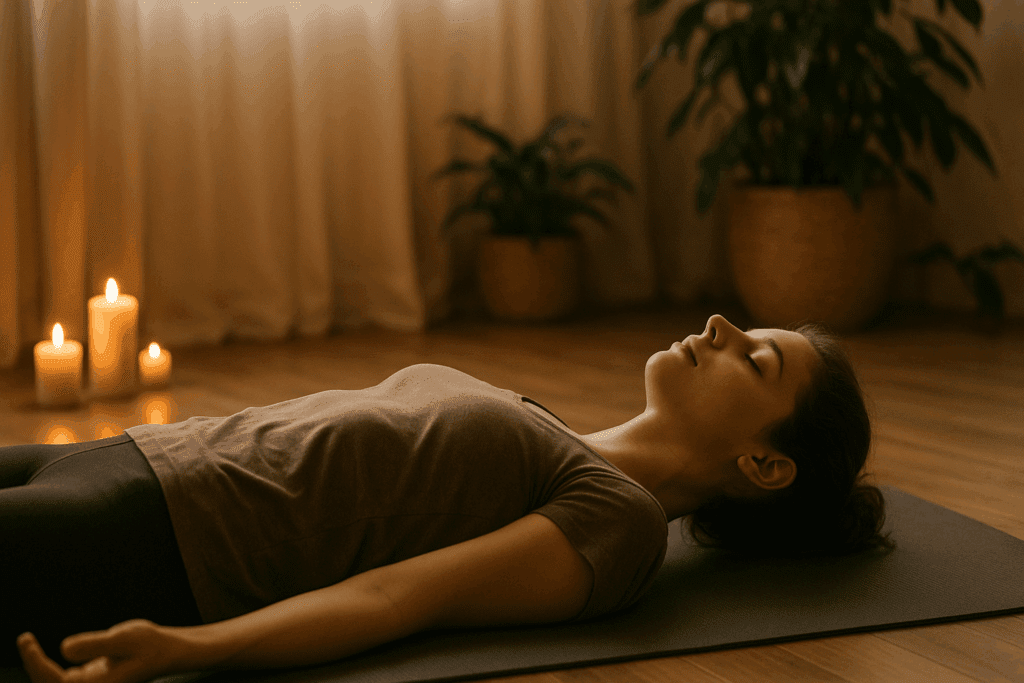
Tossing and Turning: The Role of Mind-Body Practices
Mind-body practices offer powerful tools for calming the nervous system and promoting sleep. Techniques such as progressive muscle relaxation (PMR), deep diaphragmatic breathing, and mindfulness meditation have all demonstrated efficacy in reducing restlessness at night. These interventions work by shifting the body out of sympathetic dominance (fight or flight) and into parasympathetic mode (rest and digest), which is essential for falling and staying asleep.
Yoga nidra, often referred to as yogic sleep, is a meditative practice that guides the practitioner into a deep state of relaxation while remaining conscious. This technique has been found to reduce anxiety and promote better sleep outcomes, particularly among individuals prone to tossing and turning. Similarly, guided imagery and body scan meditations help direct attention away from ruminative thoughts and physical discomfort, fostering a sense of calm that supports natural sleep onset.
Incorporating these practices into a nightly wind-down routine can transform the sleep experience. Just 15 to 20 minutes of focused relaxation before bed can reduce the time it takes to fall asleep, minimize nocturnal awakenings, and enhance overall sleep quality. While these techniques may require consistent practice to yield noticeable benefits, they are low-risk, accessible, and supported by growing scientific evidence.

Nutritional Interventions for Restlessness and Sleep Disruption
Nutrition plays a surprisingly significant role in sleep health. Certain foods and nutrients can either support or hinder the body’s ability to initiate and sustain sleep. For individuals who frequently experience tossing and turning, making targeted dietary changes can offer substantial benefits. Foods rich in tryptophan, magnesium, calcium, and melatonin precursors help promote the production of serotonin and melatonin, two neurotransmitters essential for sleep regulation.
Examples include almonds, bananas, turkey, oatmeal, and tart cherry juice—all of which have been associated with improved sleep quality in clinical studies. Magnesium in particular has garnered attention for its calming effect on the nervous system, with deficiencies linked to increased anxiety and poor sleep efficiency. Supplementing with magnesium glycinate or magnesium citrate, under the guidance of a healthcare provider, may reduce restlessness and nighttime awakenings.
Hydration is another important factor. While drinking too much fluid close to bedtime can lead to frequent urination and sleep fragmentation, mild dehydration can also interfere with thermoregulation and cause the body to feel uncomfortable when trying to sleep. The key lies in striking a balance—ensuring consistent hydration throughout the day and tapering fluid intake a couple of hours before bed.
Caffeine and alcohol warrant special attention. While alcohol may initially promote sleep onset, it disrupts REM sleep and leads to frequent awakenings in the second half of the night. Caffeine, even when consumed six hours prior to bedtime, can delay the onset of sleep and reduce total sleep time. Recognizing the impact of these substances and adjusting consumption habits accordingly can significantly reduce nighttime restlessness.
Frequently Asked Questions About Restless Sleep and Nighttime Disruptions
What Are Some Unexpected Reasons for Tossing and Turning That Most People Overlook?
While stress and poor sleep hygiene are common culprits, some lesser-known reasons for tossing and turning at night include subclinical inflammation, subtle environmental irritants, and disrupted thermoregulation. Even low-level allergens such as dust mites in bedding or off-gassing from synthetic mattresses can make your body feel uncomfortable when trying to sleep. Light pollution from digital alarm clocks or outdoor streetlights, even when indirect, can also interfere with melatonin production and lead to fragmented rest. Additionally, subtle temperature shifts from HVAC cycling or fluctuating hormones—especially in perimenopausal individuals—can trigger micro-awakenings that contribute to tossing and turning. Identifying these overlooked variables can be key in achieving a truly restorative night’s rest.
Why Am I So Restless at Night Even When I’m Tired?
This paradox is often tied to a phenomenon called sleep-state misperception, where the body appears ready for sleep, but the mind remains hyper-alert due to unresolved cognitive load. Mental overstimulation from late-night problem-solving, excessive screen time, or emotional rumination may lead to persistent restlessness at night despite physical fatigue. Moreover, elevated nighttime cortisol levels—often the result of chronic stress or disrupted circadian signaling—can make it difficult for the nervous system to shift into sleep mode. Nutrient imbalances, particularly magnesium or omega-3 deficiencies, may also contribute to why you’re so restless at night. Managing both physiological and psychological readiness for sleep is crucial to addressing this frustrating disconnect.
How Does Social Jet Lag Affect Tossing and Turning Patterns?
Social jet lag, the misalignment between one’s biological clock and social schedule, is a surprisingly powerful driver of tossing and turning at night. People who drastically alter their sleep and wake times between weekdays and weekends often experience disruptions in melatonin rhythms and sleep architecture. This misalignment not only causes difficulty falling asleep on Sunday nights but also increases the likelihood of feeling restless at night during the workweek. Over time, the repeated resetting of one’s internal clock can erode the body’s natural sleep cues, leading to chronic fatigue and fragmented rest. To reduce the impact of social jet lag, strive for consistent bedtimes and wake times, even on weekends.
Could Chronic Pain Be Why I Toss and Turn All Night?
Yes, undiagnosed or under-managed chronic pain conditions are a significant reason why many people toss and turn all night. Pain from conditions like fibromyalgia, osteoarthritis, or even mild nerve compression can subtly interfere with sleep without fully waking the person. These pain signals disrupt deep and REM sleep, leading to a diminished feeling of refreshment upon waking. Even individuals who don’t consciously notice pain during the day may find that discomfort becomes more pronounced in still, quiet nighttime settings. Effective pain management, including physiotherapy, nighttime-specific medication, or adaptive mattresses, can reduce movement and help those whose body feels uncomfortable when trying to sleep.
How Does the Meaning of Restless Sleep Differ From Simple Insomnia?
The meaning of restless sleep extends beyond just struggling to fall or stay asleep—it describes a state where sleep occurs but is shallow, fragmented, and non-restorative. Unlike classic insomnia, where a person lies awake, individuals with restless sleep may technically get enough sleep hours yet still feel exhausted. This often results from poor sleep efficiency or repeated micro-awakenings caused by subtle stimuli, blood sugar fluctuations, or stress hormones. Restless sleep may also lack sufficient amounts of deep and REM sleep, which are crucial for physical recovery and memory consolidation. Understanding the meaning of restless sleep helps differentiate it from insomnia and allows for more targeted treatment strategies.
How Can Nutrition Influence Restlessness at Night?
Diet plays a more influential role in sleep regulation than many realize. High glycemic index foods consumed late in the evening can lead to rapid fluctuations in blood sugar, which may trigger nighttime awakenings and contribute to tossing and turning. Conversely, a protein-rich evening snack with tryptophan, such as Greek yogurt or turkey, can support serotonin and melatonin production, promoting deeper rest. Magnesium-rich foods like spinach, pumpkin seeds, and almonds can also help relax muscles and reduce restlessness at night. Additionally, alcohol—even in small amounts—initially induces drowsiness but later disrupts REM sleep, increasing nocturnal awakenings. Managing food timing and nutrient balance is an essential tool for those battling frequent nighttime disruptions.
What Role Does Mental Health Play in Feeling Restless at Night?
Mental health conditions such as generalized anxiety disorder, PTSD, and depression are often silent contributors to feeling restless at night. These disorders elevate baseline arousal levels and prolong sleep onset latency, leading to more frequent tossing and turning. Nightmares, intrusive thoughts, and heightened sensory sensitivity further disrupt normal sleep cycles. Moreover, individuals with anxiety often experience anticipatory sleep anxiety, a fear of not sleeping, which paradoxically makes rest more elusive. Addressing underlying mental health through therapy, medication, or mindfulness-based cognitive strategies can drastically reduce night-time agitation and improve sleep continuity.
Exploring Tossing and Turning as a Physiological Feedback Loop
Tossing and turning is not only a symptom but often part of a self-reinforcing feedback loop that keeps the body in a semi-aroused state. As movement increases, so does alertness, preventing the descent into deeper sleep stages. This state may cause the body to release adrenaline, further impairing the ability to relax. Over time, the brain begins to associate the bed with stress and motion rather than sleep and stillness. Breaking this cycle involves reconditioning the body’s cues for sleep through structured routines, guided relaxation techniques, and, in some cases, environmental changes such as scent and sound optimization.
Why Do I Toss and Turn All Night Despite Practicing Good Sleep Hygiene?
Good sleep hygiene is foundational but not always sufficient to resolve complex sleep disturbances. Even with optimal light exposure, caffeine management, and bedtime consistency, tossing and turning all night can persist if deeper physiological or psychological triggers remain unaddressed. For example, underlying sleep apnea or circadian rhythm disorders often require specialized medical interventions. Additionally, people who have experienced trauma may carry nocturnal hypervigilance, which sleep hygiene alone cannot fully correct. In these cases, integrating trauma-informed care, cognitive behavioral therapy, or chronotherapy may offer more substantial relief.
How to Reclaim Restful Sleep When the Body Feels Uncomfortable Trying to Sleep
When the body feels uncomfortable when trying to sleep, it’s crucial to identify both physical and environmental contributors. Often, discomfort arises not from a single issue but from a combination of temperature imbalances, posture misalignment, or minor nerve impingements. Ergonomic evaluation of one’s mattress and pillow support can reveal deficiencies that compound restlessness. Incorporating pre-bed stretching routines, gentle yoga, or thermal therapy (like warm showers or heating pads) can improve circulation and ease muscle tension. Addressing these discomforts directly can significantly reduce the physical agitation that causes tossing and turning at night, restoring a more peaceful and sustained slumber.
Final Thoughts: Breaking the Cycle of Restless Sleep With Science-Backed Strategies
Addressing the root causes of tossing and turning requires a holistic approach that integrates behavioral changes, environmental modifications, physiological awareness, and supportive lifestyle habits. Rather than relying on temporary fixes, the most effective path to restorative sleep involves understanding the unique interplay of factors that contribute to restlessness at night. Whether it is identifying why you toss and turn all night, managing stress, optimizing your bedroom, or exploring the meaning of restless sleep through better self-awareness, each solution offers a step toward sustained improvement.
The journey toward better sleep may not yield instant results, but through consistent application of evidence-based strategies, even chronic patterns of poor sleep can be reversed. The body and mind are remarkably resilient and responsive to positive change when given the right tools and environment. As sleep quality improves, so too does mood, cognitive clarity, immune function, and overall quality of life. For anyone weary from sleepless nights and desperate to break free from the cycle of tossing and turning, science offers not only hope but a clear, practical roadmap to recovery.
Further Reading:
Top Causes of Nighttime Restlessness — and How to Manage Them
“I can’t stop tossing and turning”: how to beat restless sleep


